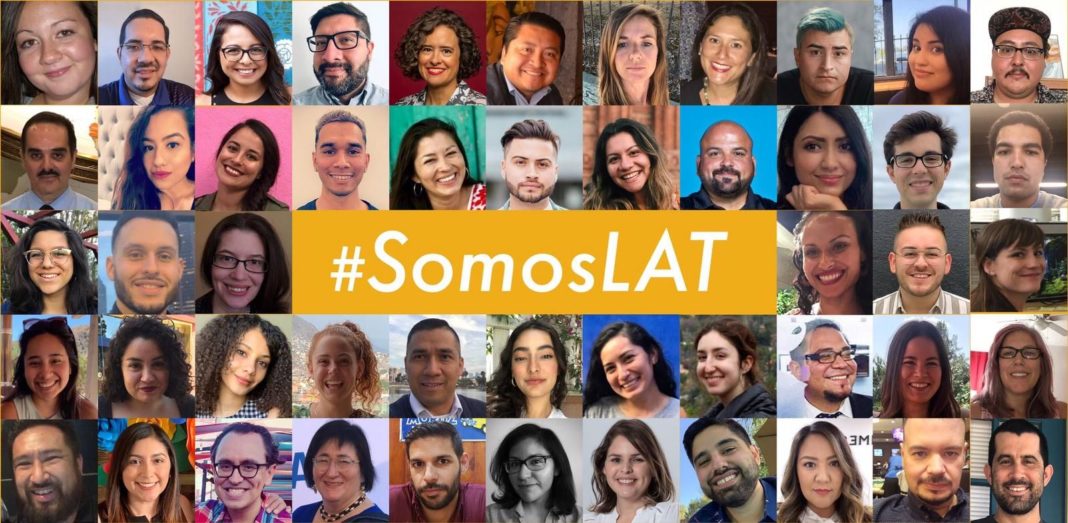It’s getting bigger in the English-language media across the country, experts say.
Lack of Latino and minority representation and integration in all areas of the English language newsroom in the country is a widespread problemsaid Dr. José Luis Benavides, professor and creator of the Spanish journalism program at California State University at Northridge (CSUN).
The definition of coverage is monocultural and passes through a white filter that indicates a racial preference and offers a distorted and negative view of the Latino and black communities, said the academic.
As soon as he learned of the open letter, the Latino journalists at the newspaper Los Angeles Times They sent their owner and publishers, demanding more representation in their newsroom. Professor Benavides prepared his own letter and sent it to Patrick Soon Shiong, the billionaire owner of the Los Angeles newspaper.
“Based on data from the US Census and from ASNE (American Society of News Editors), the gap between the percentage of journalists considered minority in newsrooms and the population considered minority in the country instead of decreasing, increased almost 10 percentage points between 1980 and 2017 ”, he says in the letter.
In interview with The opinion, Dr. Benavides specifies that in 1980, the disparity between whites and minorities was 15.54%; and for 2017 it increased to 24.95%.
“Instead of decreasing it has been growing,” he says.

While some English-language media began publishing Spanish-language newspapers in the 1980s, he notes that they only did so as a marketing strategy in new areas, but they were never prioritized, and their reporters have treated them as second-rate journalists.
And remember that in 1978, English media publishers announced a parity plan for 2020 with the goal of including different minority groups. “As 2020 approached, they realized they were not going to deliver, and decided to postpone that parity until 2026.”
Bridging the gap between white and minority journalists is a goal that Dr. Benavides highly doubts can be achieved by the great crisis in which the newspapers are immersed.
However, he believes that in business terms, there is no point in keeping that white filter in newsrooms.
As proof of this, he quotes Dr. David Hayes-Bautista who in a recent interview said that “Latinos in the United States are the eighth largest economy in the world.”

Inspiration for all
Rebecca Aguilar, with almost 40 years of work as a journalist, former vice president of the National Association of Hispanic Journalists (NAHJ), creator of the group Latinas in Journalism on Facebook and representative of minorities in the Society of Professional Journalists, He says bosses sometimes don’t take Latino journalists seriously.
The problem is that “if we are going to complain, we are risking our work”.
And he harshly questions the lack of Latino representation in the LA Times: “I’m angry. What happens to the owners? These reporters have worked hard. Why don’t they have a Latino on the investigative team and in other important areas of coverage? ”
And he adds that when bosses are questioned, they always have an excuse. “I’ve been listening to them since 1981. They make fools of themselves. Many of those bosses are people of color who forget their roots, ”he says.
Her greatest wish is that the Los Angeles Times group of Latino journalists who raised their voices will inspire other minority groups.
“And where is the NAHJ in all of this. Their position must be to defend and protect their members, and demand that they do not treat Latino journalists as second-class citizens. When are you going to sit down and talk to the Times to see what actions you are going to start taking?
Rebecca argues that the lack of Latino representation in the English media will not change until reporters are not afraid to make sacrifices and when they stop complaining quietly. “I never shut up, I complained and that’s why they ran me,” he says.
NAHJ calls on @latimes leadership to act on the critical demands of Latino & Black journalists. During a recent historic hiring spree of 168 people, only 29 Latinos were brought into the company. # SomosLAT # MoreLatinosInNews @ DrPatSoonShiong @NPearlstine @kyoshino @LATimeskraft
– NAHJ (@NAHJ) July 21, 2020
The opinion He contacted Hugo Balta, leader of the NAHJ to find out what specific actions they are going to take, and asked us to see the Twitter they published on July 21 when the open letter of complaint from the Latino reporters of the Los Angeles Times was published.
“The NAHJ calls on @latimes leadership to act on the critical demands of Latino and African American journalists. During recent hires of 168 people, only 29 Latinos were brought into the company“
Unfair recruitment
Professor Benavides told the Times in his letter to them that public universities in the region can help them recruit talented minority applicants.
“The fact that only 10 of the 250 interns in the METPRO program in the Times have studied on a California State University (CSU) campus is the product of racial and class presuppositions that they are part of almost all the meritocracy systems that are created with the pretension of being neutral ”.
He adds: “Most of the metrics used to decide who deserves a place in this minority recruitment program of the Times They are very effective at selecting students with more privileged backgrounds than identifying students with knowledge of communities of color and greater potential to be effective journalists in a multiracial society.
“The lack of CSU students in the METPRO program is also a reflection of the higher education news coverage of the Times, which favors elite public and private schools over CSU and Community University systems, which are generally not covered or portrayed in a negative or stereotypical way. “









